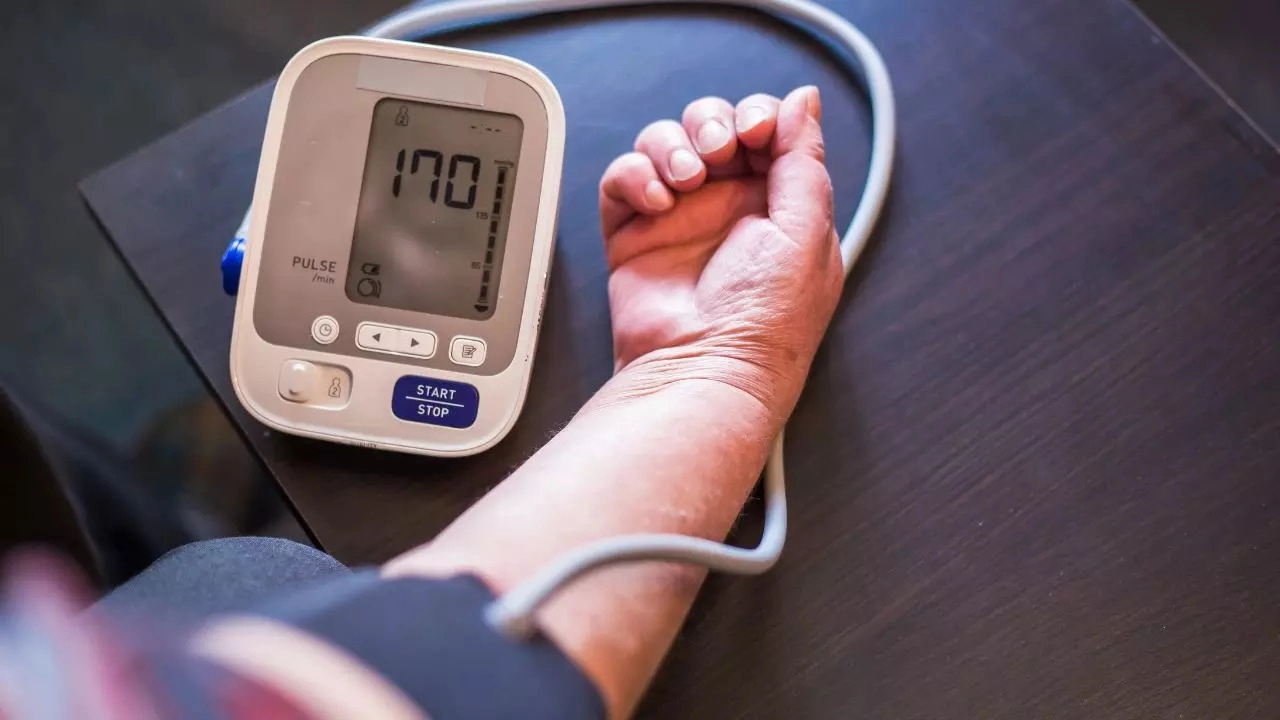A recent study published in JAMA Internal Medicine has shed light on how arm positioning during blood pressure measurements can significantly affect the accuracy of the results. The research reveals that improper positioning, whether at home or in a doctor’s office, can result in readings that are much higher than the actual blood pressure.
Specifically, when the arm is not properly supported at heart level on a table, it can lead to overestimated blood pressure readings, potentially causing misdiagnosis or unnecessary treatments for high blood pressure.
The study, led by Dr. Tammy Brady from Johns Hopkins University, focused on how different arm positions impacted blood pressure measurements. In the research, 133 adults were monitored while their blood pressure was taken in three different positions: resting on a desk (as recommended), resting on the lap, and hanging by the side.
The results showed that when the arm was on the lap, systolic pressure was overestimated by 3.9 mm Hg, while diastolic pressure was overestimated by 4 mm Hg. When the arm hung by the side, these figures were even higher, with systolic pressure overestimated by 6.5 mm Hg and diastolic pressure by 4.4 mm Hg.
The implications of these findings are significant, especially for people who rely on home blood pressure monitors. As many individuals use these devices for daily monitoring, incorrect arm positioning during measurements could lead to inaccurate readings.

These discrepancies can be particularly problematic for patients who may be diagnosed with high blood pressure based on these inaccurate measurements, which could result in unnecessary treatments or missed opportunities for intervention.
According to Dr. Brady, the study serves as a crucial reminder for both healthcare providers and patients about the importance of proper arm positioning during blood pressure measurements. She stressed that healthcare professionals should be diligent in following the correct guidelines to ensure accurate blood pressure readings.
This includes making sure the patient’s arm is supported at heart level and that other factors, such as cuff size and patient posture, are also appropriately managed.
The researchers identified several physiological factors that contribute to inaccurate readings when the arm is not positioned correctly. One key factor is the effect of gravity, which increases hydrostatic pressure in the arteries when the arm is either unsupported or below heart level.
This results in artificially elevated blood pressure readings, as gravity pulls more blood toward the cuff. Additionally, an unsupported arm may cause muscle contraction, further contributing to increased blood pressure.
The findings of this study align with previous research, reinforcing the idea that unsupported arms or those positioned lower than heart level can lead to overestimated blood pressure readings. Experts like Dr. Nichola Davis agree that accurate blood pressure measurement is critical for diagnosing and treating hypertension, as errors in measurement can lead to inappropriate medical decisions. These errors can affect a patient’s treatment plan, especially in individuals with elevated blood pressure.
In addition to proper arm positioning, other factors must be taken into account for an accurate blood pressure reading. These include the correct cuff size, sitting posture, and ensuring that the patient is calm and relaxed. Experts recommend avoiding smoking, exercise, or caffeine in the 30 minutes prior to taking a reading, as these factors can artificially raise blood pressure. By ensuring all these factors are addressed, patients can be more confident that their readings reflect their true condition.
The study also addresses the broader issue of hypertension, which is a major contributor to cardiovascular diseases such as heart disease and stroke. Despite its prevalence, many individuals with high blood pressure are either undiagnosed or inadequately treated.
Dr. Dave Montgomery, a cardiologist, emphasized that even small errors in blood pressure readings can have significant effects on treatment plans, particularly for patients already diagnosed with hypertension. Thus, accurate measurements are essential for effectively managing the condition and reducing the risk of cardiovascular complications.
Overall, this study highlights the critical role that correct arm positioning plays in obtaining accurate blood pressure readings. It also serves as a reminder that blood pressure should not be assessed in isolation.
Patients and healthcare providers alike must ensure that all factors contributing to accurate measurements, including proper technique and environmental conditions, are taken into consideration. By doing so, the risk of misdiagnosis and unnecessary treatment can be minimized, and patients can receive the most effective care for managing their blood pressure.
